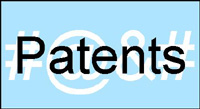took far less resource and time to develop than that. Without a doubt, the KSR v. Teleflex Supreme Court decision has changed the patent landscape that we at PatentMonkey.com operate in.
Without delving into a position piece on the pro’s of IP ownership, we now ask the question, “So what does this all mean?”
Patents are a Four Letter Word
 As a backdrop, popular opinion has been quite pointed on the topic of patents. AsktheVC noted in March:
As a backdrop, popular opinion has been quite pointed on the topic of patents. AsktheVC noted in March:
You should know that the word “patent” around this blog is a four letter word… if you are engaged in a business, you should not be monitoring patents in your ecosystem for the very reasons that you bring up: knowingly infringing someone’s patent can lead to treble damages and attorney fees. Sometimes ignorance is bliss. If you happen to stumble upon something that you might infringe, you are in the unenviable position of what to do (answer: call your lawyer).
Are Patents Now Really a Sinking Tide?
At first glance, the Supreme Court ruling strikes at the heart of a couple critical concerns that have caught the public’s eye: the growing number of infringement suits; and poor patent quality. We foresee two likely outcomes from this ruling:
1. Patents on incremental improvements will yield to prior art = a shift in the value from patent owning parties (that own incremental improvements) to other patent owning parties (that own core technologies) instead of a balanced lowering of the value of all patents; and
2. Incremental innovations will be harder to convert into cash = an idea someone or some firm has building on a product is now less likely to make that firm rich and just as likely to make the company that is currently making or selling the product richer.
Supporting this idea, in the Supreme Court KSR ruling, Justice Kennedy wrote:
Granting patent protection to advances that would occur in the ordinary course without real innovation retards progress and may, for patents combining previously known elements, deprive prior inventions of their value or utility.
Pay special note to the phrase: “deprive prior inventions of their value or utility” as this leads one to conclude that while the rewards of a patent for invention remain strong, the bar has been solidly put at a higher level to achieve that right. During all of this, we’ve not mentioned that this favors Web 2.0 start ups v. Microsoft/Novell as this ruling makes it harder to attain and defend incremental inventions and puts the weight on the core invention from the research lab, university or company that funded it, like Microsoft.
Less Risk, and More Risk
With changes come opportunities, and many players are digesting the case’s impact from IBM to Venture Capitalists. From an economic stakeholder standpoint, this ruling is a mixed bag. On one hand, it fosters more, faster innovation by more competitors with rewards going to the company that gets products to market cost effectively (and the consumer benefits). On the other hand, funding R&D projects and new companies is going to be harder to justify putting even more risk on attaining longer term payoffs. Will this spur or dampen innovation, start ups and jobs that grow from it? That will now have a chance to play out in the market.
Popular IP attorney and patent blogger, Stephen Albainy-Jenei, astutely notes:
Unfortunately, any way you slice it, the Supreme Court took one amorphous, hard-to-define test and replaced it with another amorphous, hard-to-define test. It remains to be seen how advances with “real innovation” are to be determined.
Notably, the Federal Circuit making use of the KSR obviousness ruling invalidated its first claim, in the Leapfrog v. Fisher-Price case. This is just a first example that patent rights have less certainty now requiring different thinking.
From This Point Forward
Entrepreneurs, companies and their investors, now need to take a fresh look at innovation + patent strategies by reviewing and organizing projects (with refinements to time lines depending on the industry):
1. Identify quick hit projects with less than a 12 month payback (=fast follower and/or small feature improvements) which should rely less on IP protection and more on go-to-market speed, quick refinements, and squeezing costs out of the system. (Sounds a lot like the 37Signals mantra)
2. Establish demonstrable impact projects that are game changers worth the investment and the attempt at protection, what can be called “Big Step Innovations”.
3. Assess and re-allocate middle-ground projects where the payoff and execution is roughly 1-3 years into either a “quick hit” or a Big Step by analyzing ease of copy-cat replication by competitors and the innovation’s jump from existing technologies.
 The results of ever increasing innovation development is leading us down a path that makes some sense if you follow Ray Kurzweil. With the growth of collaborative tools like Digg, WordPress and Twitter, companies have more opportunities than ever before to tap into innovative sources (see Dell’s IdeaStorm and IBM’s Global Innovation Jam). Eric von Hippel at MIT adds that “lead users” are best suited to develop and enhance technologies they use. We are entering a new phase where companies, employees and consumers will be able to interact in ways not cost effectively possible before.
The results of ever increasing innovation development is leading us down a path that makes some sense if you follow Ray Kurzweil. With the growth of collaborative tools like Digg, WordPress and Twitter, companies have more opportunities than ever before to tap into innovative sources (see Dell’s IdeaStorm and IBM’s Global Innovation Jam). Eric von Hippel at MIT adds that “lead users” are best suited to develop and enhance technologies they use. We are entering a new phase where companies, employees and consumers will be able to interact in ways not cost effectively possible before.
Patents will continue to play a role, just a different one than 30 days ago.